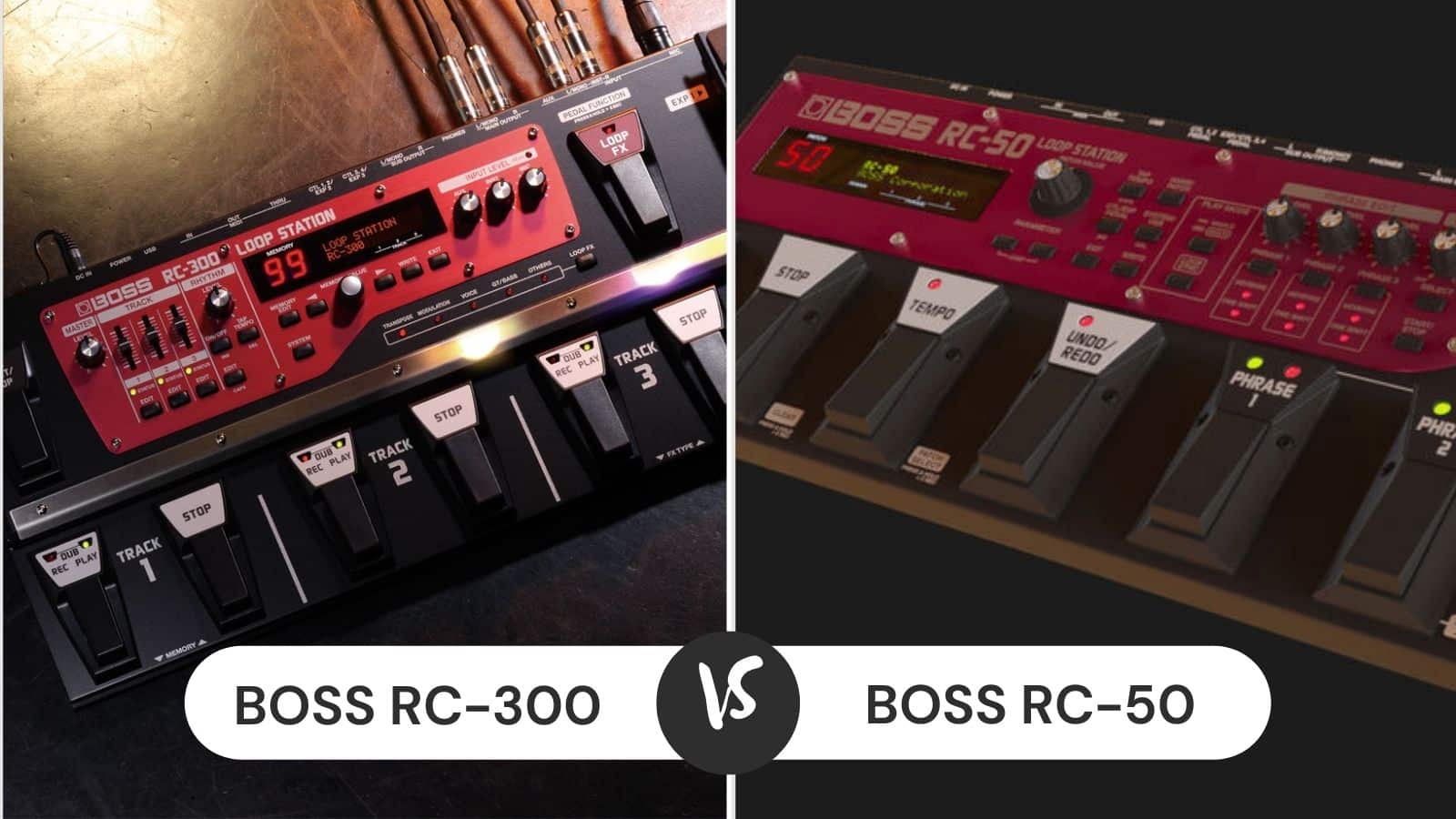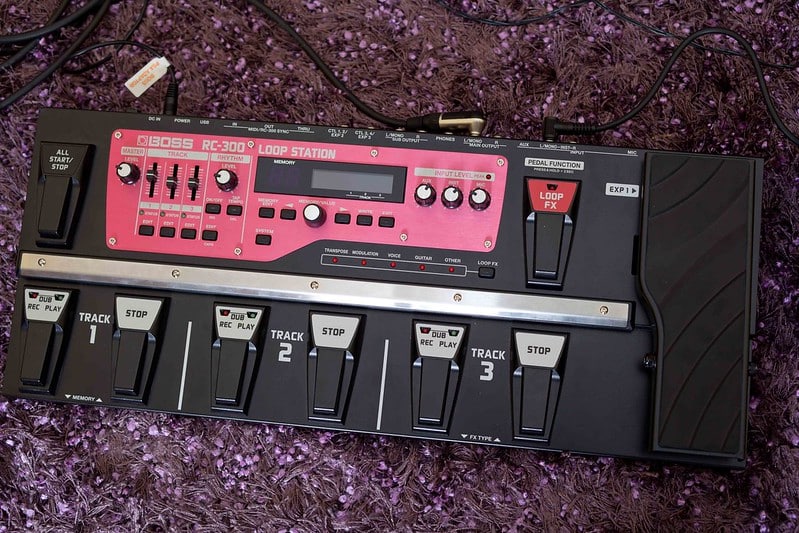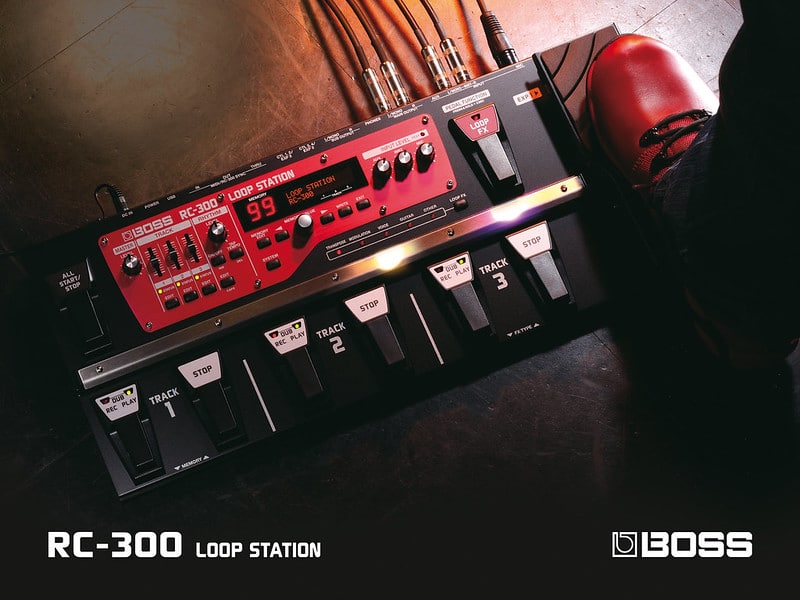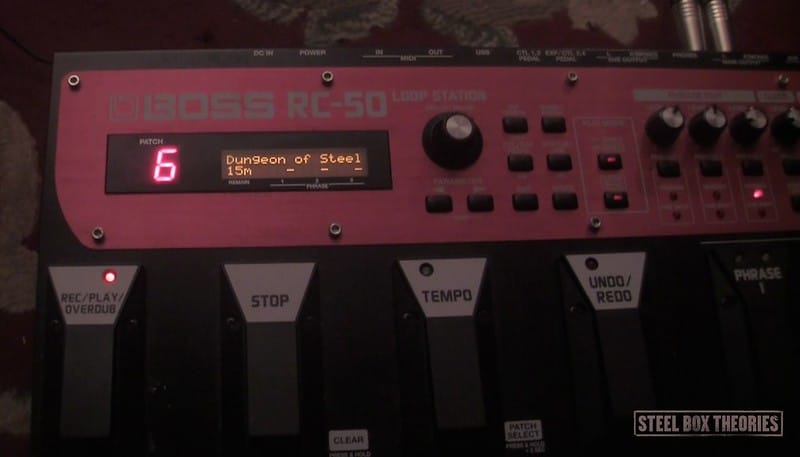
Boss is one of the biggest brand names when it comes down to electronics and its audio equipment range is one of the most versatile and reliable out there.
Boss has designed an array of loop stations that are curated to help musicians record their music in real-time and replay it on a loop. They help musicians with overdubbing to create a polyphonic and vast soundscape.
So, if you are looking for a loop station of your own, we have a Boss RC-300 and RC-50 comparison to help you out!
Comparing the Boss RC-300 vs RC-50
| RC-300 | RC-50 | |
|---|---|---|
| Expression pedal | Yes | Yes |
| Effects | 16 | Not specified |
| Mixer | Three-channel mixer | Stereo mixer |
| Loops | Three | Three |
| Weight | 3.9kg | 2.9kg |
| Foot pedals | 8 | 7 |
| Inputs | XLR and USB | Mic and USB inputs |
Boss RC-300
This is the flagship loop station designed by Boss and has set the performance bars high. It has a massive size since it is 21-inches wide and is around 9-inches from back to front. This means that you will need to put away the pedals a bit.
It has a rugged metal construction and there are eight foot pedals. In addition, there is an in-built expression pedal that helps shape the music and tones. It has been integrated with looper pedal characteristics as well.
Some of these features include tempo-shifting, reverse playback, sample-like playability, auxiliary inputs, rhythm tracks, redo or undo function, and multiple stop modes.
There are different outputs available for guitar amps and subs, which means you can produce bass directly from the bass stack rather than from the amp. In addition, there are ninety-nine internal memory positions and all of them store three different tracks.
Boss RC-300’s internal memory promises sufficient space for three hours of constant recording. In addition, it can be connected to the PC with the help of a USB cable for exporting the loop collection, which increases the number of loops.
The users can also connect an external drive, so you don’t have to worry about insufficient memory. It’s easier to switch between different tracks as there are stop and overdub/play/record pedals.
For instance, you can record music on track one and press the pedal for recording the second track – it’s a great feature for live musicians. Moreover, there is one pedal that you can use for stopping and starting the playback of three tracks at once.
1. Design
The loop station has been designed with built-in effects, with which you can add chorus, delay, distortion, lo-fi, flanger, pitch-bend, and phaser effects to the music tracks.
In addition, there is a transpose feature available that allows the users to customize the recording’s pitch without altering the tempo. Moreover, there is a specific effect available for turning the guitar into a bass, which eases the music production.
The loop station has been designed with an expression pedal that helps optimize the effects. In addition, the users can add pitch bends to the music track without impacting the rhythm.
The loop station has over twenty-three rhythmic backings available for conga, maracas, funk, rock, R&B, and swing music. The 4/4 timing is pretty amazing as there are seventeen time signatures available and all of them have ten backing tracks.
The time syncing features have been improved, which promises on-time overdubbing and you can add three tracks at once. In simpler words, all three tracks will begin at once and have proper syncing.
2. Features
The loop station has been integrated with the undo or redo feature, which helps add new elements to the tracks or remove them.
There are three stop modes available, including fade, end of the current loop, and immediate, which help you finish the music tracks as you like. There is a reverse play available for creating different audio effects.
There is an edit feature that helps set a desired effect on the music track. Also, you can preset the features through the control panel for quick track customization during music performances.
The first press of the pedal starts recording while the second press starts overdubbing. In addition, there is an automated fade-out and fade-in to the loop’s beginning and end, promising the elimination of unwanted noise.
It’s a reliable choice for complicated music compositions as well as live music performances. However, it’s recommended that you practice this loop station before using it on the stage to ensure easier control.
Pros
- Three simultaneous controllable and customizable tracks
- Sufficient memory
- USB connectivity
- Expression pedal
- Multiple built-in effects
Cons
- It requires more footswitches for hands-free operation
Boss RC-50
This loop station model was launched in 2006 and has become the most sophisticated, value-oriented, and all-round unit. It works as a multi-tracker, rhythm, and looper machine, which promises a vast performance scale.
You can get your hands on three phrases or loops – you can also record or store the loops in a patch. There are ninety-nine patches available in this unit and each patch supports three loops. The musicians can also name the patches for easier export.
There is built-in memory, with which you can record twenty-four minutes of stereo recording time and forty-nine minutes of mono recording. There is a USB port available on the unit, which helps export the phrases or patches as WAV files.
In addition, the users can edit the patches, organize them, and reload them into the loop station. Exporting the patches is not only important for creating a backup but frees up the memory as well.
This is not a guitar-specific station because there are separate input ports, including an aux with a 3.2mm configuration, USB, and instrument input with a 6.4mm jack. The users can record from three inputs at once but to one phrase only.
1. Design
To begin with, there are three input ports available. The loop station has been designed with stereo sub outputs, which can be configured as the primary outputs for the guitar amp.
In addition, there is a 6.4mm stereo jack designed in this station, which promises easier recording. It has an all-metal construction, promising durability.
The loop station has an LED patch indicator in red color and there is an LCD display, so you can name the patches and make other changes.
The loop station’s lower half has seven footswitches and there is enough space to connect four additional control switches.
On the other hand, the upper half of the loop station has push buttons and rotary controls, which makes it easier to navigate through the settings.
On the top side of the unit, there are connections and metal chassis jacks for easier powering and connectivity.
2. Features
The loop station has been designed with the center-cancel feature that allows the users to lose the lead vocals as well as lead guitar from the audio source.
In addition, there is a flat amp feature that allows the users to adjust the recorded audio’s tone to make sure the sound is more accurate. There are two play modes available in the loop station, including single and multi.
The multi-mode allows the users to record a phrase to one location, which can be played in the background simultaneously or individually as well.
The loop station has a loop sync feature that allows the users to play a loop constantly. On the other hand, with the single mode, the users can switch between different recorded loops, making it suitable to create intro and end patterns.
It has been designed with a rhythm guide that has more than fifty patterns and they are pre-installed into the unit. However, these patterns can be tailored and you can customize the level, signature, and tempo.
Keep in mind that there is no click pattern in this loop station but you can overlay the sound recordings on one loop/phrase. Every phrase or loop can be overdubbed and you can play the same part of the chord to create a natural chorus.
In addition, the users can add the harmony line or reverse the recorded patterns and restore the main pattern.
Pros
- Metal build
- Allows addition of harmony lines
- Allows tone adjustment
- Powerful design
- LCD display
- Easier navigation
Cons
- Insufficient click for live drummers
The Bottom Line
It’s evident that both these loop stations by Boss are designed with metal construction and have top-notch recording features. However, Boss RC-300 promises more control over records since there is a quantize feature.
On the other hand, the RC-50 is suitable for beginners who want to practice at home as its features aren’t good enough for professional performances/gigs.



